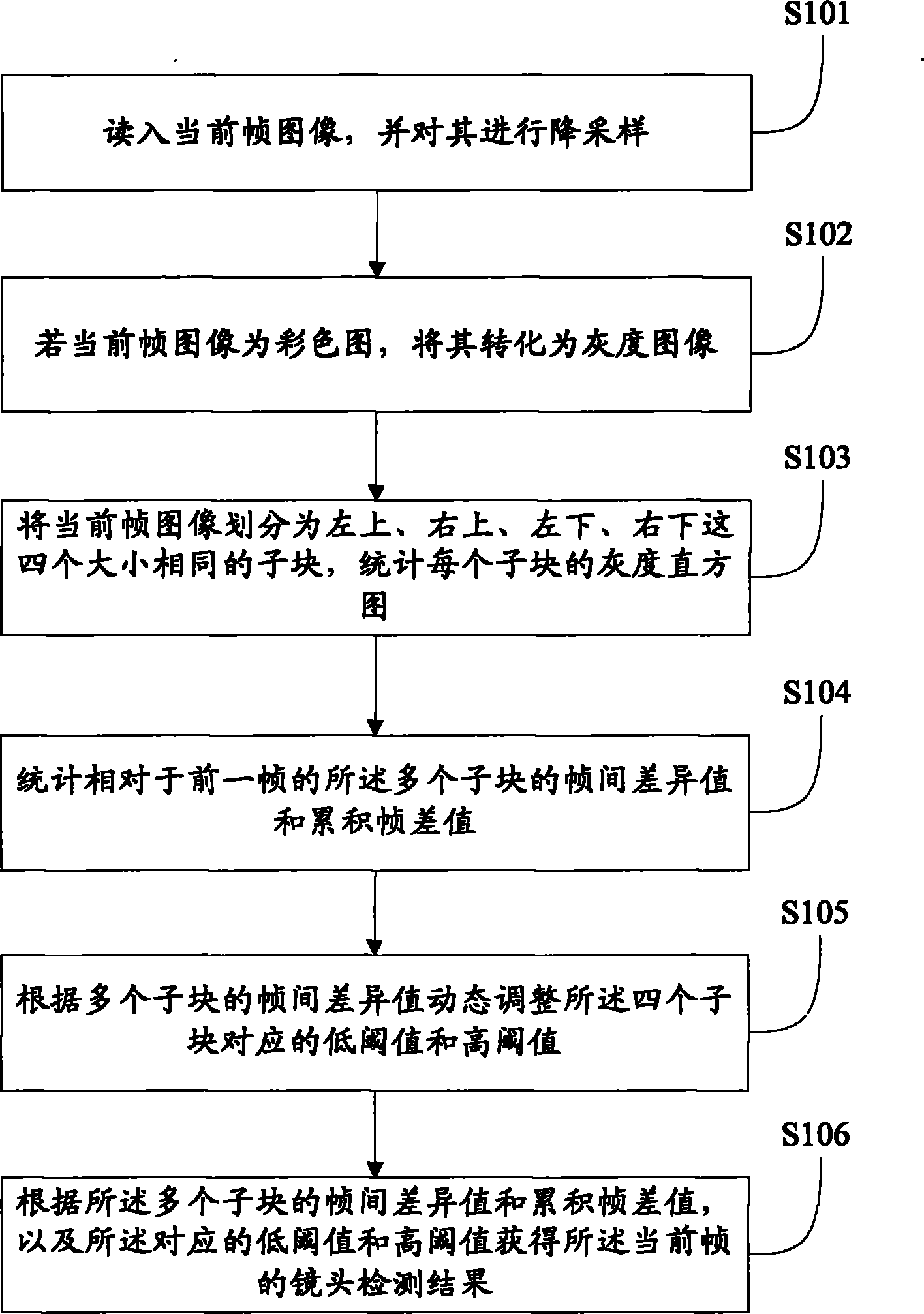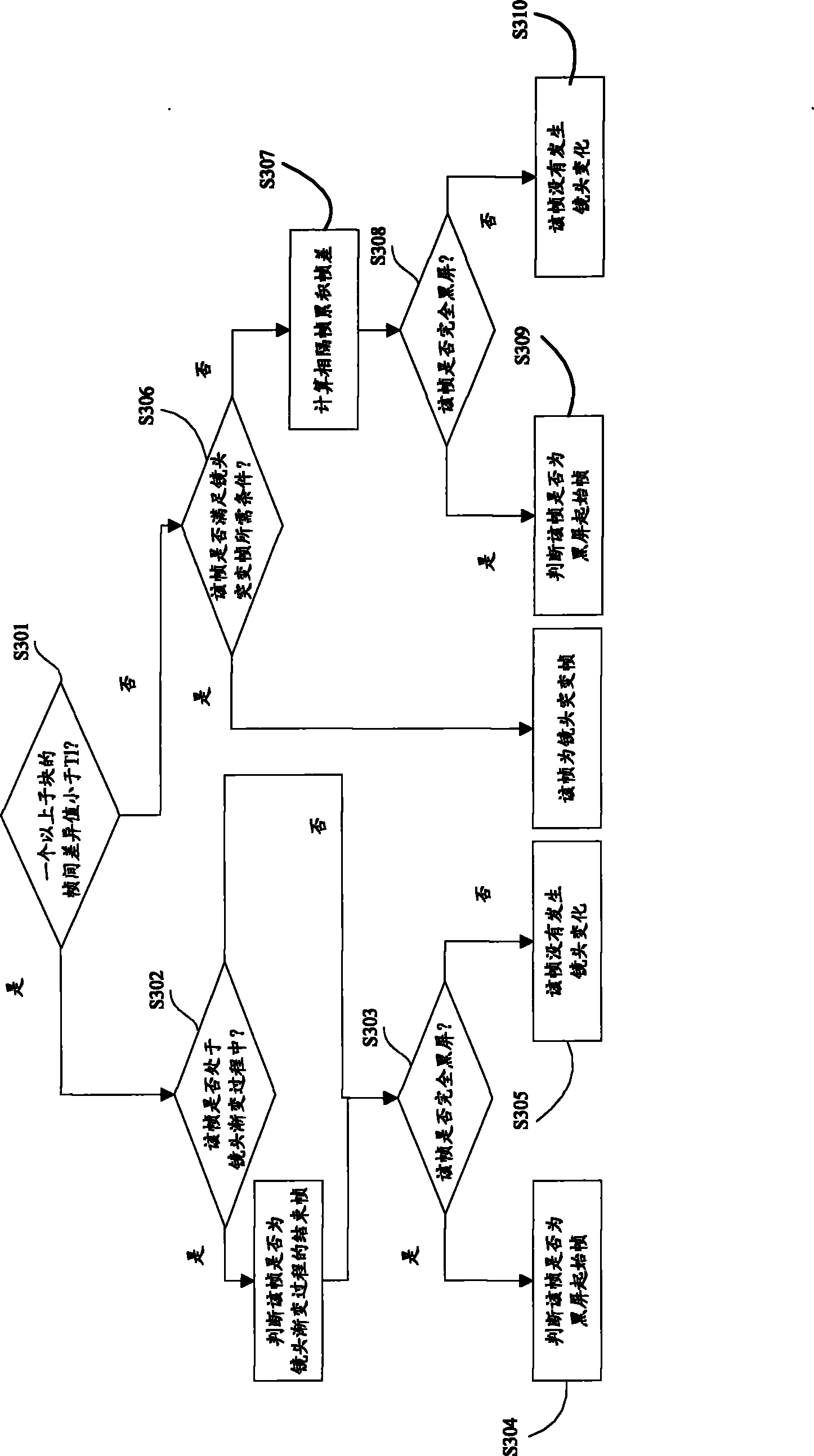Method and device for detecting lens in real time in fully automatic two-dimensional (2D) to three-dimensional (3D) technology
A lens detection, fully automatic technology, applied in the direction of television, electrical components, stereo systems, etc., can solve the problems of modes that do not conform to online processing, complex principles, multi-time, etc., to enhance robustness and adaptability, principle and Simple process and high real-time effect
- Summary
- Abstract
- Description
- Claims
- Application Information
AI Technical Summary
Problems solved by technology
Method used
Image
Examples
Embodiment Construction
[0018] Embodiments of the present invention are described in detail below, examples of which are shown in the drawings, wherein the same or similar reference numerals designate the same or similar elements or elements having the same or similar functions throughout. The embodiments described below by referring to the figures are exemplary only for explaining the present invention and should not be construed as limiting the present invention.
[0019] The invention is based on a double-threshold algorithm and improves the double-threshold algorithm. In order to have a clear recognition and understanding of the present invention, the dual-threshold algorithm is briefly introduced below. The double-threshold method sets two thresholds T b and T s , where T b >T s , the frame difference between the current frame and the next frame is greater than T b When there is a sudden change in the lens, and the frame difference between the previous frame and the next frame is less than ...
PUM
 Login to View More
Login to View More Abstract
Description
Claims
Application Information
 Login to View More
Login to View More - R&D
- Intellectual Property
- Life Sciences
- Materials
- Tech Scout
- Unparalleled Data Quality
- Higher Quality Content
- 60% Fewer Hallucinations
Browse by: Latest US Patents, China's latest patents, Technical Efficacy Thesaurus, Application Domain, Technology Topic, Popular Technical Reports.
© 2025 PatSnap. All rights reserved.Legal|Privacy policy|Modern Slavery Act Transparency Statement|Sitemap|About US| Contact US: help@patsnap.com



